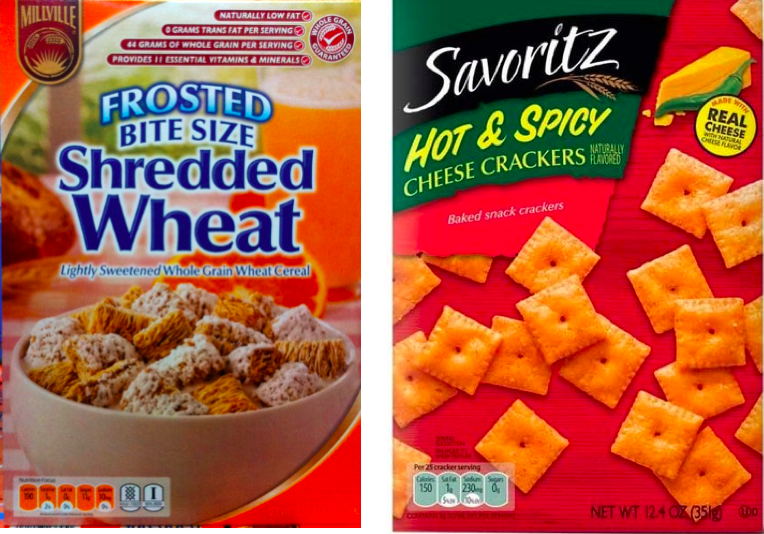Walking through an Aldi last week, I saw two oddly-familiar products.
You’d be forgiven if, at first glance, you also thought these were name brands.
These are, in fact, Aldi products. They use the Millville brand name for their cereals and Savoritz for their crackers. And these are just two of the many brands Aldi has created, each one playing on the familiar cues of each category.
Copycat brands have long played on the equities of market leaders, and they walk a fine line between reference and infringement. Aldi could indeed be in danger of creating confusion in the market, as they carry a small number of national brands (for example, KraftMiracle Whip stacked right next to Aldi’s eerily-familiar “Burman’s” brand mayonnaise).
National brands have to defend their equities, both in court and in the shopper’s mind. Both of those battlegrounds require considerable effort.
This arms race is another reminder of the importance of what Byron Sharp calls distinctive assets: brand elements that help a shopper easily identify your brand. But don’t confuse distinctive assets with the brand equity or visual ID: the latter are simply decided upon at headquarters, where as the former are measured in the market, in the minds of shoppers.
Step one is to identify which brand elements are actually distinctive (again, measured in the minds of shoppers). After that, brands need to consider which elements to invest in, which to cut, and which to create from scratch. (And then which to defend against copycats.)
Finally, here are a few more oddly-familiar Aldi products.


